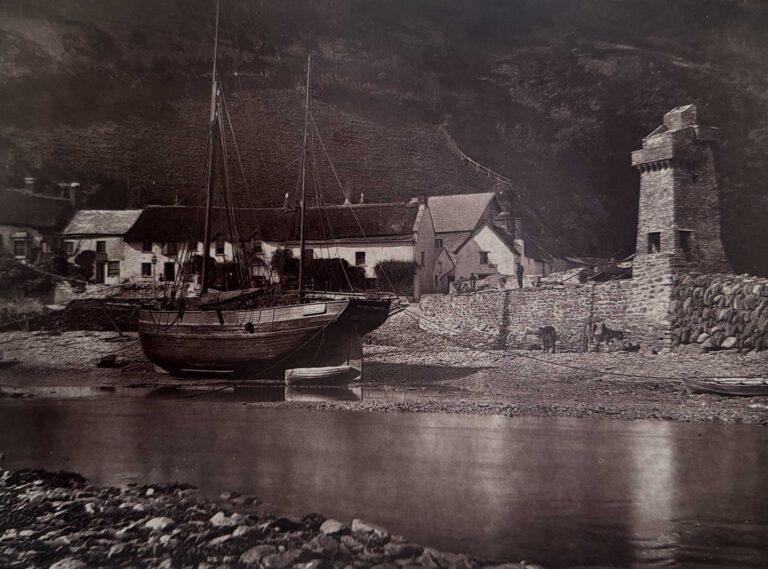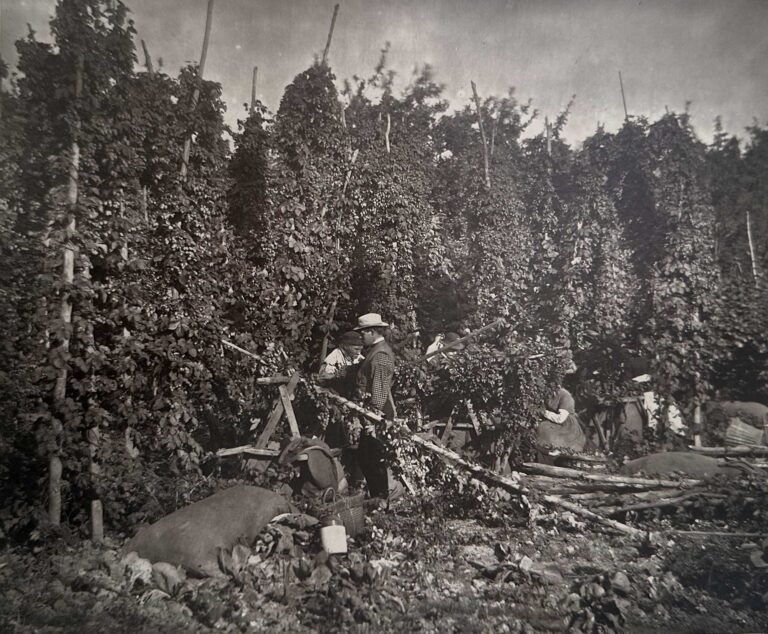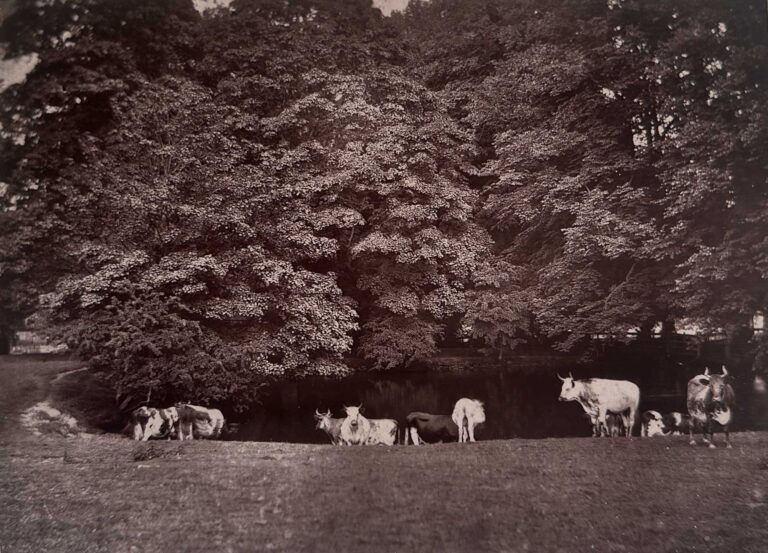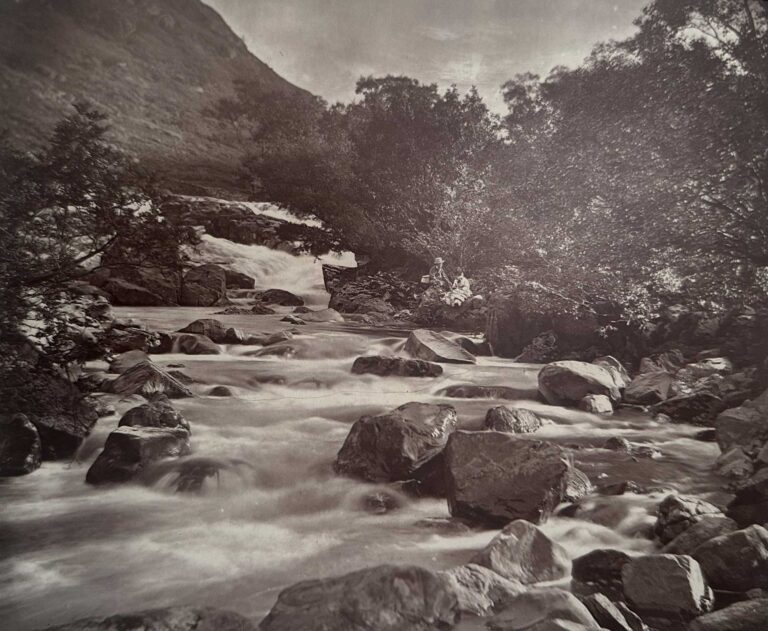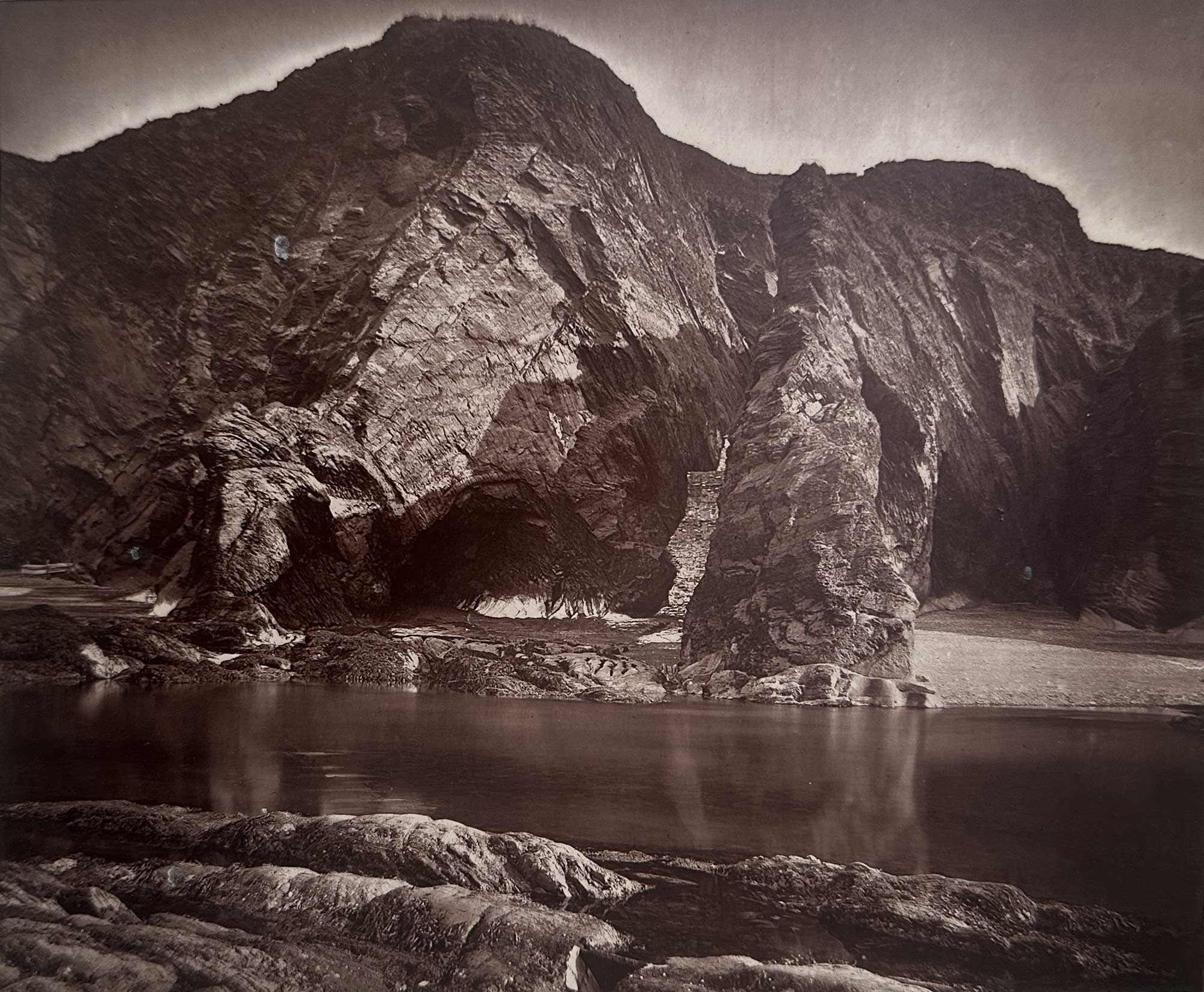
Crookhorn Cavern, Ilfracombe
Descriptive letterpress printed opposite this photograph:
CROOKHORN CAVERN, ILFRACOMBE.
NO coast scenery is perfect without its cavern, and yet more, without a romantic story or legend attached to it! Crookhorn Cavern has its tradition like the rest. After the murder of Thomas-à-Becket in the dim twilight of a late December afternoon in Canterbury Cathedral, A. D. 1170, Sir William Tracy, one of the four knights who perpetrated the deed, together with his accomplices, plundered Becket’s stables of the horses on which the archbishop had always greatly prided himself, and Tracy rode thence to his native Devon, in which county the Tracys held large possessions, including the barony of Barnstaple and the manor of Ilfracombe. Crookhorn Cave (so called from a crooked crag now washed away), though dry at low water, is filled by the tide each day, except during about three months in the year. His arrival, and necessity for concealment, took place at one of these periods, and here he was secreted, and fed by provisions conveyed to him by his daughter during the darkness of night.
Our illustration represents it as it appears at low water. The rocks in the foreground are covered by every tide, which daily bursts into the cave with a hollow sound, just as it did 700 years ago, when the too faithful knight of Henry II. lay perdu there! Passing the tors we come to the lonesome hollow of Rockham Bay, and Morte Point, a low-lying ridge of rugged rocks running out into the sea, and terminating in one ill-omened rock called Morte Stone or death stone- fatal to many a gallant vessel. Seated on a hill overlooking the Atlantic stands the village of Morthoe. The black, jagged cliffs here rise to a height of 800 feet, displaying every variety of configuration.
In the Church of St. Mary Magdalene rests the dust of Becket’s assassin, Sir William Tracy. Another William Tracy, who was rector of the parish a hundred and fifty years later (d. 1322), has a tomb-slab erected to his memory, carved with figures of a priest in robes and holding a chalice in his hands. An old farm-house, called Woollacombe racy, is said to mark the spot where Becket’s murderer lived in dreary exile. Across the bay stretch the Woollacombe sands, remarkable as being the only sands along the North Devon coast, and as presenting a pure and driven expanse for some miles.
